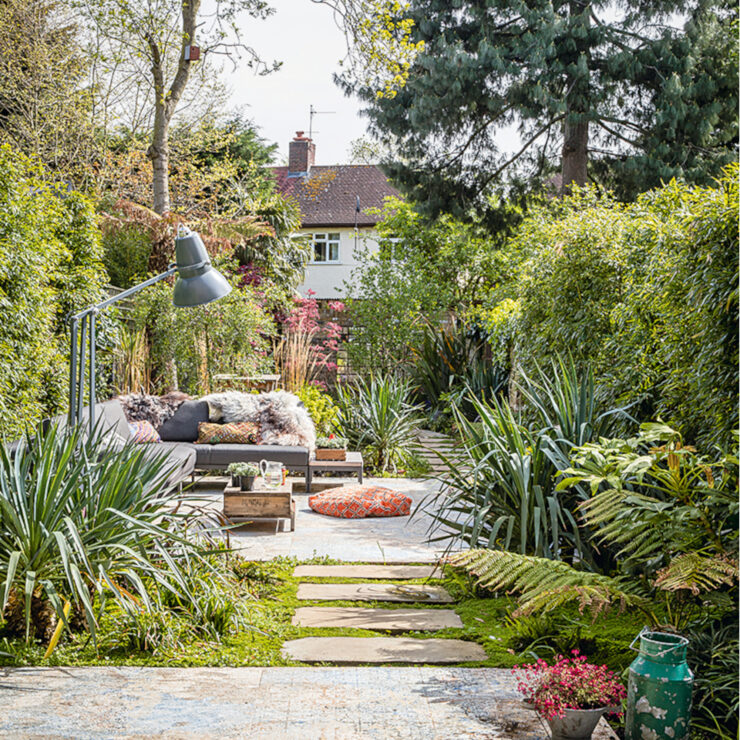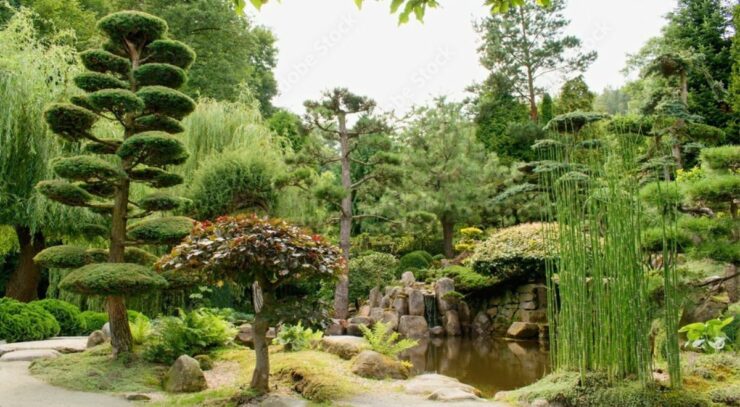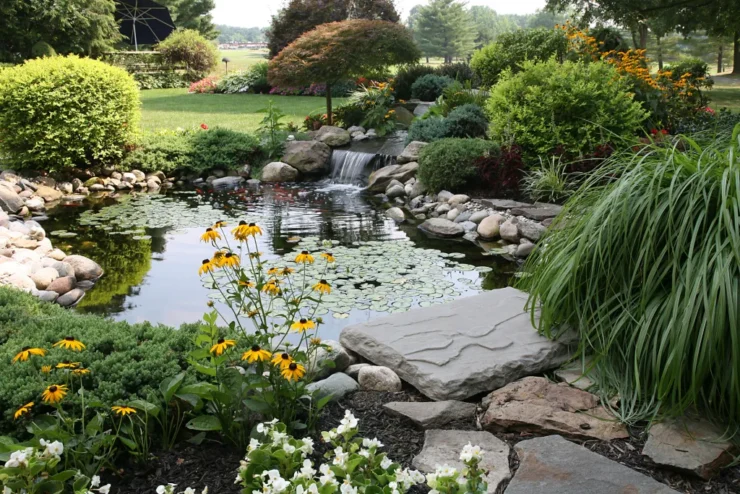Table of Contents
In the hustle and bustle of modern life, finding a space for peace and tranquility has become a necessity. A Zen garden, with its minimalist yet profound design, serves as a spiritual haven where one can reflect and meditate.
This article will guide readers through the process of creating a Zen garden, exploring the elements that make it a unique space for relaxation and contemplation. The concept of Zen, originating from the meditative practices of Buddhism, emphasizes simplicity, harmony, and the profound connection between the mind and the physical environment.
A Zen garden encapsulates these principles, inviting the observer to a journey of self-discovery and inner peace. Through carefully chosen rocks, meticulously raked sand, and thoughtfully placed plants, a Zen garden becomes a living work of art that resonates with the natural world. It’s not merely a decorative space but a reflection of the philosophical insights that guide our understanding of existence.
The creation of a Zen garden is a deeply personal endeavor, allowing the individual to express their inner thoughts and emotions through tangible elements. Whether it’s a small corner in a city apartment or a vast landscape in a countryside home, a Zen garden adapts to its surroundings, offering a sanctuary from the chaotic world outside. It’s a place where time seems to stand still, where the mind finds solace, and where the soul reconnects with the essence of being. In a world filled with noise and distraction, the Zen garden stands as a testament to the enduring human quest for meaning, balance, and serenity.
The Essence of Zen Garden

The Zen garden, or “karesansui” in Japanese, is a dry landscape garden that symbolizes the essence of nature. It’s not just about rocks and sand; it’s about creating a space that resonates with the soul. Interestingly, the best outdoor barrell sauna can also be a part of this serene environment, providing a warm retreat within the cool, calming garden.
Choosing the Right Elements
Rocks and Stones
The rocks and stones in a Zen garden are more than mere decorations. They represent mountains, islands, or even mythical creatures. The placement of these elements should be carefully considered, as they are the foundation of the garden’s design. Selecting the right rocks and stones is a delicate process, reflecting the garden’s theme and the creator’s vision. Shapes, sizes, and colors play a vital role in the overall composition. Some may symbolize strength and stability, while others may represent flow and movement. The interplay between these elements creates a dynamic yet harmonious landscape that invites contemplation and connection with nature.
Sand and Gravel
The raked sand or gravel symbolizes water, waves, or even the emptiness of space. The patterns created in the sand can be a personal expression or follow traditional designs. The choice of color and texture adds to the garden’s overall aesthetic. Raking the sand into intricate patterns is a meditative practice, allowing the gardener to focus and reflect. The ripples and waves can represent the ever-changing nature of life, the flow of time, or the vastness of the universe. The act of raking itself becomes a part of the garden’s essence, a ritual that connects the human spirit with the eternal dance of nature.
Plants and Moss
While not always present, plants and moss can add a touch of life to the Zen garden. They should be chosen for their simplicity and ability to blend with the other elements. Less is more in this context. The choice of plants and moss should reflect the natural environment, adding subtle color and texture without overwhelming the minimalist design. Moss can symbolize growth and decay, the endless cycle of life. Plants, on the other hand, can represent resilience and beauty in simplicity. Together, they bring a gentle vitality to the Zen garden, a whisper of life in a space dedicated to reflection and inner peace.
Building the Garden

Selecting the Location
The location of the Zen garden should be a quiet and peaceful spot. It can be a corner of a yard or even a part of an indoor space. The size doesn’t matter as much as the feeling it evokes. The chosen location should resonate with the individual’s sense of tranquility and reflection. It could be a place where the natural light dances with the shadows, or where the gentle breeze whispers through the leaves.
Accessibility, privacy, and the surrounding environment should also be considered. The location becomes a sacred space, a sanctuary where one can escape the daily grind and connect with the inner self. It’s not just about the physical attributes; it’s about creating a space that nurtures the soul and invites serenity.
Designing the Layout
Sketching the layout helps in visualizing the garden before construction begins. It’s a creative process that requires thoughtful consideration of each element and its symbolic meaning. The design should reflect the philosophy of Zen, with each component carefully chosen and placed to create harmony and balance.
Consideration of the natural flow of energy, or “chi,” can guide the layout, ensuring a sense of movement and life within the garden. The sketch becomes a blueprint, a visual representation of the spiritual journey that the garden embodies. It’s a fusion of art and spirituality, where the lines on paper transform into a living landscape that speaks to the heart and mind.

Constructing the Garden
Building a Zen garden is a meditative process in itself. It involves placing the rocks, raking the sand, and planting the moss or other vegetation. Every step should be done with mindfulness and intention. The construction is not merely a physical task but a spiritual practice, where each stone placed, each line raked, is a manifestation of inner thoughts and feelings.
The hands that shape the garden are guided by the soul, creating a space that is both personal and universal. Attention to detail, patience, and a deep connection with the materials and the earth make the construction of a Zen garden a transformative experience. It’s a journey of self-discovery, where the act of building becomes a path to understanding and enlightenment.
Creating a Zen garden is more than a landscaping project; it’s a journey to tranquility and reflection. It’s about connecting with nature and oneself, finding balance, and creating a space that nurtures the soul. Whether it includes the warmth of the best outdoor barrel sauna or the cool touch of a mossy rock, a Zen garden is a personal sanctuary that speaks to the heart.

